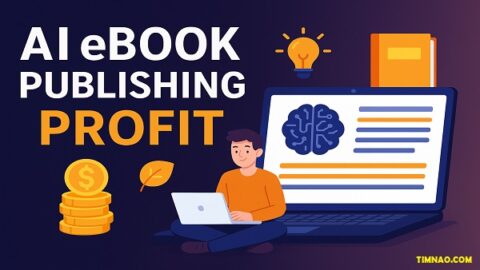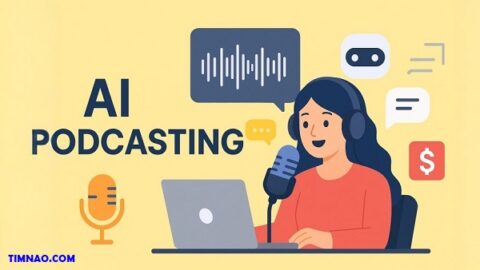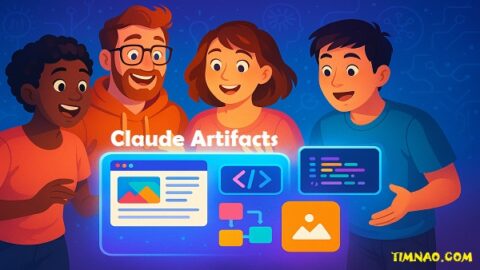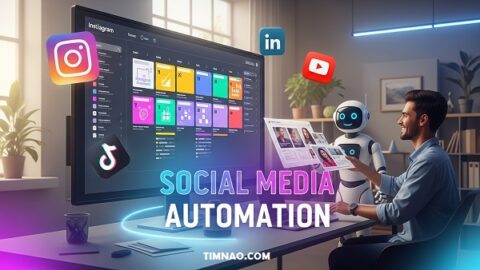Write With AI: 10 Incredible Ways to Grow Your Business Using Smart Marketing Strategies ✨
The world of marketing is evolving at lightning speed, and Artificial Intelligence (AI) is leading the charge. If you’re an entrepreneur, marketer, coach, or business owner, understanding how to Write With AI isn’t just an advantage anymore – it’s becoming essential for business growth. But don’t worry, you don’t need to be a tech wizard or a professional copywriter to leverage this incredible technology.
This guide breaks down how you can use AI copywriting and AI marketing strategies to connect with your audience, boost your brand, and drive serious business growth. We’ll explore everything from understanding the basics to implementing advanced techniques in content marketing, SEO, social media, and more, all while keeping it beginner-friendly and relatable.
1. Embracing the AI Revolution in Copywriting 🤖
AI copywriting is here, and it’s transforming how we create marketing messages. Think of it as having a super-powered writing assistant. Tools built with sophisticated algorithms, like Natural Language Processing (NLP), can analyze massive amounts of data to understand context and generate text that sounds remarkably human.
Why is Copywriting So Crucial Anyway?
In a world where the average attention span is just eight seconds, your words need to grab attention fast. You often have mere milliseconds to make a good first impression online. Copywriting is the art of using words persuasively to compel action – whether that’s buying a product, signing up for a newsletter, or engaging with your content. It bridges the gap between your brand and your customer, building connections that lead to results. Great copywriting differentiates your brand, while weak copy gets lost in the noise.
How AI Changes the Game:
- Speed & Efficiency: AI tools can generate first drafts of blog posts, product descriptions, social media updates, ad copy, and emails in seconds, freeing up your time for strategy and refinement. This automation of repetitive tasks is a major productivity booster.
- Idea Generation: Stuck for ideas? AI can brainstorm blog topics, ad angles, and content themes based on your prompts.
- Personalization at Scale: AI analyzes customer data (demographics, behavior, preferences) to help you tailor messages for specific audience segments, making your marketing feel more relevant and personal.
- Optimization: AI can analyze text for clarity, tone, and grammar, suggest improvements, and even predict which subject lines might perform best. Tools like Grammarly offer AI-powered suggestions for grammar, style, and tone.
- Data Analysis: AI processes data from website analytics, social media, and customer feedback to identify patterns and insights, helping you make data-driven decisions about your marketing strategies.
Popular AI Copywriting Tools:
- ChatGPT: A versatile conversational AI great for brainstorming, drafting content, and learning. Its paid versions offer more advanced features like web Browse and image generation.
- Jasper: Focuses on generating marketing content like blogs, social media posts, and emails quickly, offering features like brand voice customization.
- Copy.ai: An AI assistant for writing, brainstorming, and research, offering workflows for sales and marketing tasks.
- HyperWrite AI: Helps rewrite content, summarize text, and generate various copy types.
- Copysmith: Designed for e-commerce content and SEO-optimized product descriptions.
- Wordtune: Ideal for rewriting and paraphrasing existing content, offering multiple sentence variations.
Important Caveats:
While AI is powerful, it’s not perfect. Remember to:
- Edit & Fact-Check: AI can make mistakes or generate outdated information. Always review and edit AI-generated content.
- Check Originality: Run content through plagiarism checkers to ensure originality.
- Inject Your Brand Voice: AI might not capture your unique brand personality perfectly. Human oversight is crucial for authenticity.
- Be Transparent: Consider adding disclaimers if AI generates a significant portion of your content.
The key is to use AI as a tool to enhance your creativity and efficiency, not replace human insight and connection entirely.
2. AI in Your Content Marketing Strategy 📝
Write With AI strategies are incredibly valuable in content marketing. Content marketing focuses on creating and sharing valuable, relevant content (blogs, videos, podcasts, etc.) to attract and retain a specific audience, ultimately driving profitable customer action. It’s about building trust and relationships, not just hard selling.
Content Marketing vs. Copywriting:
Think of it this way:
- Content Marketing: Aims to inform, educate, or entertain to build brand awareness and nurture leads over time (e.g., blog posts, guides, videos). The goal is engagement and relationship building.
- Copywriting: Aims to persuade the audience to take immediate action (e.g., website buttons, ad copy, sales pages). The goal is conversion.
High-quality copywriting is essential for effective content marketing. Even the best content ideas fall flat without compelling headlines, clear calls-to-action (CTAs), and engaging language that resonates with the reader.
How AI Powers Up Content Marketing:
- Content Generation: Quickly draft blog posts, social media updates, video scripts, and more.
- Content Optimization: AI tools analyze content for readability, SEO keywords, grammar, and tone, suggesting improvements. Some tools analyze readability using metrics like Flesch-Kincaid.
- Topic Ideation: Generate content ideas relevant to your audience and industry trends.
- Content Repurposing: Easily adapt existing content for different platforms (e.g., turn a blog post into social media snippets or a video script).
Key Elements of a Strong Content Marketing Strategy:
- Audience Personas: Create detailed, fictional representations of your ideal customers based on research (demographics like age/location, and psychographics like interests/values/pain points). This helps tailor content effectively.
- Brand Story: Define your narrative – your history, mission, values, and what makes you unique (USP). A compelling story builds emotional connections and trust.
- Content Marketing Mission: Clearly state the purpose and goals of your content efforts (e.g., increase awareness, generate leads, drive traffic).
- Business Case: Articulate why investing in content marketing makes sense for your business, outlining potential ROI and how it supports broader goals.
- Action Plan: Detail the specifics – content topics, formats (blogs, videos, podcasts, infographics, emails, webinars, e-books, interactive quizzes, user-generated content, reviews), distribution channels (Facebook, X, Instagram, LinkedIn, Pinterest, TikTok, YouTube, etc.), publishing schedule, and performance metrics.
Remember to set SMART goals (Specific, Measurable, Achievable, Relevant, Time-bound) for your content efforts to track progress effectively.
3. Knowing Your Audience Inside Out 🧑🤝🧑
You can’t Write With AI effectively, or write compelling copy in general, without deeply understanding who you’re talking to. It’s about tailoring your message to resonate with their specific needs, desires, challenges, and motivations.
Demographics vs. Psychographics:
- Demographics: The ‘who’ – age, gender, location, income, education, etc.. This tells you the basic characteristics.
- Psychographics: The ‘why’ – interests, hobbies, values, beliefs, lifestyle choices, attitudes, pain points. This tells you what drives their decisions.
Why Audience Research is Non-Negotiable:
- Targeting: Focus your efforts (and budget) on the people most likely to be interested.
- Personalization: Create content that speaks directly to their interests and concerns, driving higher engagement.
- Differentiation: Identify market gaps and how your brand uniquely solves your audience’s problems.
- Adaptation: Stay informed about evolving consumer preferences and adapt your strategies.
AI’s Role in Audience Research:
AI revolutionizes audience research by processing vast amounts of data quickly.
- Data Aggregation & Analysis: AI tools gather data from website analytics (Google Analytics), CRM systems, social media, and more to identify patterns in behavior and preferences.
- Predictive Analytics: Forecast future trends and behaviors to anticipate needs.
- Sentiment Analysis: Analyze text from reviews, social media, and forums to understand how people feel about your brand or industry.
- Audience Segmentation: Group audiences based on shared characteristics for more targeted messaging. Netflix is a prime example, using AI to analyze viewing habits and offer personalized recommendations.
- Buyer Persona Crafting: AI helps analyze data to build detailed buyer personas, identifying common behaviors, preferences, pain points, and goals. Remember to validate these personas with real customer feedback.
Addressing Motivations, Needs, Challenges, and Pain Points:
Once you understand your audience, address these elements directly in your copy:
- Motivations: What drives them (convenience, status, security, self-improvement)? Position your offering accordingly.
- Needs: What specific needs does your product/service fulfill (affordability, quality, innovation)? Clearly articulate the benefits.
- Challenges: What obstacles do they face (time constraints, budget, lack of knowledge)? Acknowledge these challenges to build trust.
- Pain Points: What frustrations, fears, or anxieties do they experience? Addressing these emotionally creates a deeper connection and demonstrates empathy.
The Power of Empathy:
Put yourself in your audience’s shoes. Understand their goals, fears, and problems. Speak their language – use the words and tone they use. This builds rapport and makes your message more relatable. Tailor messages for different audience segments, recognizing their unique needs.
4. Finding Your Brand’s Unique Voice and Tone 📣
In a noisy digital world, a distinct brand voice isn’t just nice—it’s crucial for standing out. Your brand voice is the consistent personality and style you use in all communications, from your website to your social media posts. It shapes how people perceive your brand.
What Exactly IS a Brand Voice?
Think of it as your brand’s personality expressed through words. Is it funny, serious, formal, casual, expert, friendly? A consistent voice builds recognition, trust, and connection with your audience. It helps customers understand who you are, what you stand for, and how you can help them. The right voice feels relatable and bridges the gap between your offer and your ideal customer.
How to Discover Your Brand Voice:
Ask yourself:
- What product/service do I offer?
- How does it improve my customer’s life?
- If my brand were a person, what would their personality be like?
- What are my core business values?
- How do I want to sound when talking to my ideal customer (e.g., cheerful, expert, reassuring)?
Choosing the Right Tone:
Tone is the attitude within your voice, which might shift depending on the context (e.g., a support email vs. a celebratory social post). To find the right overarching tone:
- Reflect on Your Brand Identity: Align your tone with your mission, values, and unique selling proposition (USP).
- Understand Your Audience: Research their communication preferences. What tone resonates with them?
- Consider Your History: Your brand’s origins and journey can inform an authentic tone.
Tailoring Language and Style:
Adapt your communication to match audience preferences:
- Language: Use appropriate vocabulary – formal vs. informal, industry jargon vs. simple terms.
- Style: Mirror their communication style (friendly, professional, direct) to build rapport.
- Concerns: Directly address their pain points and challenges in your messaging.
The Importance of a Brand Story:
Your brand story is the narrative that explains your ‘why’ – your founding, mission, challenges, and milestones. An authentic, heartfelt story creates an emotional connection.
- Communicate Values: Weave your core values into your narrative.
- Show Personality: Let your defined brand personality shine through.
- Use Visuals: Enhance your story with images, videos, and graphics.
- Choose the Right Medium: Share your story on your website, social media, email, etc., tailoring it to the platform.
- Be Authentic: Honesty builds trust.
- Evolve: Keep your story fresh by incorporating new developments.
Why You Need a Tagline:
A tagline is a concise, memorable phrase summing up your brand’s essence. Think Nike‘s “Just Do It”. A good tagline aids recognition, communicates value, builds identity, differentiates you, and enhances marketing efforts.
Creating Brand Guidelines:
Documenting your brand voice and tone ensures consistency across all communications, especially as your team grows. Include:
- Brand Values & Personality: Define who you are. Consider brand archetypes (like the Hero, Sage, Jester) for deeper definition.
- Tone Attributes: List specific characteristics (e.g., friendly, witty, authoritative) with examples.
- Style Guide: Detail grammar, punctuation, formatting preferences.
- Voice & Point of View: Specify first-person (“we”) vs. third-person, active vs. passive voice.
- Content Samples: Provide examples demonstrating the voice in different contexts.
- Competitor Analysis: Note how competitors sound to identify opportunities for differentiation.
- Training & Review: Educate your team and regularly review/update the guidelines.
5. Connecting Deeply Through Emotive Storytelling ❤️
Facts tell, but stories sell. Especially stories packed with emotion. Write With AI can help generate story ideas, but the real connection comes from understanding and leveraging human emotion. Emotional marketing taps into customer desires and feelings to build relationships that go beyond simple transactions. People often make decisions based on emotions, not just logic.
Why Emotional Marketing Works:
- Evokes Empathy: Relatable stories make your audience feel understood and connected.
- Creates Lasting Impressions: Emotional experiences are memorable. Positive feelings associated with your brand lead to better recall.
- Builds Trust & Loyalty: Authentic emotional connections foster trust. Customers trust brands that seem to understand them.
Key Emotions in Marketing:
Generally, four core emotions are leveraged:
- Happiness: Inspires sharing, increasing brand awareness.
- Sadness: Elicits empathy and giving.
- Fear/Anxiety: Can create urgency or highlight how your product provides security, leading to loyalty. FOMO (Fear Of Missing Out) is a common tactic.
- Anger/Frustration: Can motivate action or sharing, potentially making content go viral (use with caution!).
Strategic Storytelling for Impact:
Weave emotion into your brand narrative using these techniques:
- Address Customer Frustrations: Show you understand their problems and position your product/service as the solution that alleviates negative feelings (fear, pain, envy).
- Share Your ‘Why’: Explain your brand’s origin, mission, and values. Share successes and challenges authentically.
- Be Transparent: Honesty about policies, practices (like sustainability efforts), and even challenges builds trust.
- Show Raw Sentiment: Don’t be afraid to show passion, dreams, and heartfelt aspirations for your business. Let your brand exude positive emotions. Create a bond.
- Set Clear Expectations: Clearly communicate what customers can expect regarding quality, terms, support, etc., to avoid misunderstandings and build a positive experience. Remember, “Customer is king”.
- Use Compelling Hooks: Craft enticing headlines and opening lines that capture attention and evoke curiosity.
- Incorporate Humor (Appropriately): Humor can create positive associations and make your brand more relatable.
- Leverage Visuals & Color: Use images, videos, and colors that evoke the desired emotions and align with your brand.
Personalized Communication:
Tailoring your message makes customers feel seen and valued.
- Use Names: Addressing recipients by name in emails creates familiarity.
- Reference Past Interactions: Mentioning previous purchases or interactions shows you pay attention.
The Power of Social Proof:
People trust other people. Incorporate these elements to build credibility:
- Testimonials & Reviews: Feature positive feedback from happy customers prominently.
- Endorsements: Leverage influencer or expert endorsements if applicable.
- User-Generated Content (UGC): Showcase photos or posts from customers using your product/service. This adds authenticity.
Measuring Your Efforts:
Track how your emotional storytelling translates into action. Monitor metrics related to sharing (happiness), donations/support (sadness), loyalty/retention (fear/security), and virality/engagement (anger/passion).
6. The Art of Conversion: Compelling Calls-to-Action (CTAs) 🎯
You’ve grabbed attention, built interest, and created desire. Now what? You need a compelling Call-to-Action (CTA) to guide your audience to the next step. A CTA is a prompt designed to elicit an immediate response – buy now, sign up, learn more, download, etc.. It’s the bridge between engagement and conversion.
Boosting Sales with Smart Copywriting & CTAs:
Effective copywriting, culminating in a strong CTA, is vital for turning prospects into customers.
- Know Your Audience: Tailor CTAs to their needs and motivations.
- Write Directly: Use “you” and “your.” Address the customer personally.
- Use Power Words: Employ words that evoke emotion or urgency (e.g., Imagine, Discover, Limited Time, Free, Instantly, Now, Save).
- Highlight Benefits (USP): Remind them why they should click – what unique value will they get?.
- Optimize for the Medium: Tailor CTAs for different platforms (website, email, social media).
- Consider Lead Magnets: Offer something valuable (e-book, checklist, webinar) in exchange for contact info, using a CTA like “Download Your Free Guide”.
- A/B Test: Experiment with different CTA wording, colors, and placement to see what converts best.
- Include Keywords: Naturally weave relevant keywords into landing page copy leading up to the CTA.
- Value Repeat Customers: Offer exclusive CTAs or discounts for loyal customers.
- Show Social Proof: Place testimonials near CTAs to build trust at the decision point.
Crafting Irresistible CTAs:
- Be Clear & Action-Oriented: Use strong verbs. Tell people exactly what to do (e.g., “Get Started,” “Shop Now,” “Request a Demo”). Keep it concise, ideally under five words.
- Create Urgency/Scarcity: Use phrases like “Limited Time Offer,” “Only 3 Left,” “Sale Ends Friday”.
- Offer Value: Emphasize the benefit (e.g., “Get Your Free Quote,” “Start Saving Today”).
- Use Strong Visuals: Make CTA buttons stand out with contrasting colors and clear design. Ensure good contrast for readability. Use design tools like ButtonOptimizer to experiment.
- Placement Matters: Position CTAs logically where the user is likely to take action (e.g., after a compelling description).
- Leverage Psychology:
- Social Proof: “Join 10,000+ Happy Customers.”
- Authority: “Recommended by Experts.”
- Framing: Focus on positive outcomes (“Start Achieving Your Goals”) vs. negative (“Stop Missing Out”).
- Negative CTAs (Use Sparingly): Sometimes “Don’t Miss This Offer” can grab attention.
Measuring CTA Impact:
Track your Click-Through Rate (CTR) – the percentage of people who saw your CTA and clicked it. This key metric helps you understand what’s working and optimize your approach.
7. Supercharging Your Copy with SEO 🚀
Writing amazing content is only half the battle; people need to find it! That’s where Search Engine Optimization (SEO) comes in. Write With AI can significantly help with SEO by identifying keywords and optimizing content, but understanding the fundamentals is key. SEO involves optimizing your website and content so it ranks higher in search engine results pages (SERPs) like Google for relevant searches. The goal is to attract more organic (non-paid) traffic.
Core SEO Concepts:
- Keywords: The words and phrases people type into search engines. Researching relevant keywords your target audience uses is crucial. Use tools like Google Keyword Planner, Semrush, or Ahrefs.
- On-Page SEO: Optimizations done on your website pages. This includes:
- Integrating keywords naturally into titles, headings (H1, H2, H3), body text, image alt text, and meta descriptions. Avoid “keyword stuffing”.
- Creating high-quality, valuable, and engaging content that satisfies user intent (what the searcher is really looking for).
- Optimizing title tags and meta descriptions to be compelling in search results.
- Using clear headings and subheadings for readability.
- Incorporating multimedia (images, videos).
- Ensuring good site structure and internal linking.
- Off-Page SEO: Actions taken outside your website to build authority and trust. This includes:
- Earning backlinks (links from other reputable websites to yours).
- Social media signals and engagement.
- Online reputation management.
- Technical SEO: Optimizing your website’s backend for search engines. This includes:
- Mobile-friendliness (essential!).
- Website speed and performance. Use tools like Google PageSpeed Insights.
- Site security (HTTPS).
- Structured data (Schema markup).
Integrating Keywords Effectively:
- Use Strategically: Place keywords naturally in titles, headings, intros, conclusions, and throughout the body text.
- Target Long-Tail Keywords: These are more specific phrases (e.g., “best AI copywriting tools for small business” vs. “AI tools”). They often have lower competition and attract highly relevant traffic.
- Focus on Humans First: Write engaging, valuable content for your audience, then optimize for SEO.
- Use Synonyms & Variations: Incorporate related terms to avoid repetition and cover the topic comprehensively.
AI-Powered SEO Tools:
AI is making SEO analysis and optimization easier:
- Semrush & Ahrefs: Comprehensive toolsets for keyword research, competitor analysis, site audits, backlink tracking, and more.
- SurferSEO: Analyzes top-ranking pages and provides data-driven recommendations for content optimization.
- MarketMuse: Uses AI to identify content gaps and opportunities for creating comprehensive content.
- Clearscope: Focuses on optimizing content based on user search intent and relevant terms.
By combining strong copywriting principles with smart SEO techniques (enhanced by AI tools), you can significantly improve your brand’s visibility and attract the right audience.
8. Winning on Social Media with AI Copywriting 📱
Social media isn’t just for sharing cat videos; it’s a powerful marketing channel connecting billions of users worldwide. Platforms like Facebook, Instagram, X, LinkedIn, TikTok, and Pinterest offer huge opportunities to engage audiences. But cutting through the noise requires smart, persuasive copy, often aided by AI marketing strategies.
What is Social Media Marketing?
It’s using social platforms to promote your brand, engage with followers, drive traffic, generate leads, and increase sales. This involves creating content, interacting, running ads, and analyzing results.
Writing Persuasive Social Media Ad Copy:
- Know Your Audience: Tailor ad copy to their interests, pain points, and the platform’s context.
- Highlight Benefits: Focus on how your product/service solves problems or improves lives.
- Create Urgency: Use limited-time offers or clear CTAs to drive immediate action.
- Be Authentic: Avoid overly salesy language; be genuine and build trust.
- Test & Iterate: A/B test ad copy, visuals, and CTAs to optimize performance based on CTR and conversions.
Adapting Your Style for Different Platforms:
Each platform has a unique vibe. Tailor your approach:
- Facebook: Versatile. Use conversational tone, eye-catching visuals, mix text, video, and live streams.
- Instagram: Visual-first. Focus on high-quality images/videos with concise, engaging captions and relevant hashtags.
- X: Brevity is key. Craft concise, impactful tweets. Use hashtags, images, and GIFs.
- LinkedIn: Professional. Share industry insights, thought leadership, and use a more formal tone.
- TikTok: Short-form video. Create engaging, entertaining, trend-aware content with catchy captions and hashtags.
- Pinterest: Visual discovery. Use high-quality, inspiring images and clear, keyword-rich descriptions.
The Power of Visuals:
Strong visuals are crucial on social media.
- High-Quality Images: Use original, brand-aligned photos.
- Engaging Videos: Create demos, behind-the-scenes content, testimonials, or tutorials. Short-form video is particularly popular.
- Eye-Catching Graphics: Use infographics or designed posts to convey information visually.
- Visual Storytelling: Use carousels, stories, or video montages to evoke emotion.
- Consistency: Maintain consistent branding (colors, fonts) across platforms.
AI-Powered Social Media Strategies:
AI tools can streamline and optimize your social efforts:
- AI Copywriting: Generate post ideas, captions, and ad copy variations quickly.
- Social Listening: Tools analyze conversations and sentiment around your brand, helping you understand your audience and track reputation.
- Content Scheduling: AI can suggest optimal posting times based on past engagement data.
- Ad Optimization: AI algorithms adjust targeting, bidding, and creative elements in real-time to maximize Return on Ad Spend (ROAS). Platforms like Google Ads and Facebook Ads incorporate AI optimization.
- Performance Analysis: AI-powered analytics provide deeper insights into engagement, reach, and conversions, offering recommendations for improvement.
9. Email Marketing Enhanced by AI 📧
Despite the rise of social media, email marketing remains a highly effective channel for direct communication and nurturing leads. However, crowded inboxes mean your emails need to be personalized and relevant to stand out. Write With AI techniques are transforming email marketing.
Key AI Applications in Email Marketing:
- Subject Line Optimization: AI analyzes past data to predict and generate subject lines likely to boost open rates. It can personalize subject lines and forecast impact. Tools like Phrasee and Automizy specialize in this.
- List Segmentation: AI goes beyond basic demographics. It can segment audiences based on behavior (website visits, past purchases, email engagement) and even predict future behavior, allowing for hyper-targeted campaigns. This relevance is crucial for engagement.
- Email Workflow Automation: AI enhances automation platforms like Mailchimp, Campaign Monitor, ActiveCampaign, Iterable, and SendGrid. AI can trigger personalized email sequences for welcoming new subscribers, recovering abandoned carts, or re-engaging inactive users at the optimal time.
- AI-Generated Content: AI tools (Persado, CrystalKnows) can draft email body copy, tailor tone, and even generate CTA button text, ensuring consistency and optimizing for engagement.
- Personalization & Dynamic Content: AI enables real-time content customization within emails based on user data, making each email feel uniquely relevant. Think personalized product recommendations like Amazon‘s. This improves customer experience and boosts conversions.
- A/B Testing: AI can enhance A/B testing by predicting outcomes or dynamically allocating traffic to winning variations of subject lines, content, CTAs, send times, or visuals. Platforms like Optimizely leverage AI for testing.
Email Marketing Best Practices (AI or Not):
- Build Your List Properly: Use clear opt-in methods (like signup forms created with tools like Wisepops).
- Segment Thoughtfully: Group subscribers for relevance.
- Write Engaging Copy: Be clear, friendly, and focus on value.
- Use Compelling Subject Lines: Keep them short, create urgency, personalize.
- Design for Mobile: Ensure emails look great on all devices. Keep designs clean and on-brand.
- Include Multimedia: Use GIFs or images strategically.
- Strong CTAs: Make it clear what you want readers to do.
- Use Social Proof: Include testimonials or UGC.
- Avoid “No-Reply” Addresses: Use a recognizable sender name.
- Analyze Performance: Track open rates, CTR, and conversions to optimize.
10. Building High-Converting Landing Pages & Sales Funnels 💰
Your landing page is often the crucial point where interest turns into action – a lead capture, a sale, a registration. It’s a key component of your sales funnel, the journey a customer takes from awareness to purchase. Write With AI can help craft landing page copy, but effective design and strategy are vital for conversion.
Understanding the Sales Funnel:
The typical stages are Awareness, Interest, Consideration, Intent, and Purchase. Modern funnels also emphasize personalization, technology (CRM, automation tools), and customer retention – keeping existing customers happy is as important as acquiring new ones.
Defining Your Landing Page Objective:
What do you want visitors to do? Your goal dictates the design and content:
- Lead Generation: Focus on a compelling offer (e-book, webinar) and a clear opt-in form.
- Product Promotion: Showcase benefits, features, pricing, and clear purchase options. Use platforms like Shopify or WooCommerce for e-commerce integration.
- Event Registration: Emphasize event details (date, time, topic) and provide a simple sign-up form.
- Direct Sales: Highlight the product, include testimonials, and provide an easy path to purchase.
Tailoring Content, Messaging, and Design:
- Know Your Audience: Adapt design (modern vs. traditional), language, and featured benefits to resonate with your specific target audience’s needs and preferences.
- Strong Headline: Grab attention immediately. Connect with their pain point or promise a solution. 8 out of 10 people read the headline, but only 2 read the rest, so make it count.
- Compelling Story/Copy: Explain the problem and how your offer solves it. Focus on benefits over features. Use clear, concise language.
- Visual Appeal & User-Friendliness:
- Clean Layout: Use white space effectively; avoid clutter. A good example is often seen on sites like McDonald’s.
- Visual Hierarchy: Make important elements (headline, CTA) stand out.
- Easy Navigation: Use clear headings and structure.
- High-Quality Visuals: Use relevant images or videos.
- Mobile Responsiveness: Ensure it looks perfect on all devices.
Leveraging Emotion and Trust:
- Positive Emotions: Use color psychology, imagery, and tone to create a positive feeling.
- Build Trust: Be transparent, use social proof (testimonials, reviews), and ensure site security.
Conversion-Focused Design Elements:
- Clear CTAs: Make buttons prominent, use action-oriented text, and consider contrasting colors.
- Directional Cues: Use arrows or visual guides pointing towards the CTA.
- Urgency Triggers: Limited-time offers or countdown timers can motivate action.
- Social Proof: Place testimonials or logos near the CTA.
- Minimize Distractions: Remove unnecessary navigation or links that could lead visitors away.
- Simple Forms: Only ask for essential information on lead capture forms.
Tracking and Analytics:
Monitor performance using tools like Google Analytics or Semrush. Track metrics like:
- Conversion Rate (the percentage of visitors who take the desired action).
- Bounce Rate (percentage who leave after viewing only one page).
- Time on Page.
- Traffic Sources.
Analyze this data to understand user behavior, identify friction points, and continuously optimize your landing page for better results.
Developing Your AI-Powered Copywriting Strategy:
- Define Objectives: What do you want to achieve with AI copy (e.g., increase conversions, save time)?
- Understand Audience: Use AI insights if possible.
- Select Tools: Choose AI platforms that fit your goals and budget.
- Craft Messaging: Use AI to generate drafts, but always refine with your brand voice and human touch.
- Optimize for SEO: Use AI SEO tools.
- Personalize Content: Leverage AI for tailored messaging.
- Start Small & Iterate: Experiment, monitor performance, and stay updated on AI advancements.
Conclusion:
Learning to Write With AI is a journey, not a destination. It’s about blending the power and efficiency of artificial intelligence with the irreplaceable value of human creativity, empathy, and strategic thinking. By integrating AI copywriting and AI marketing strategies thoughtfully into your workflow – from understanding your audience and crafting compelling stories to optimizing for SEO and conversions – you can significantly enhance your marketing efforts, build stronger customer relationships, and achieve sustainable business growth. Embrace the tools, stay curious, and start rewriting your brand’s success story today!









